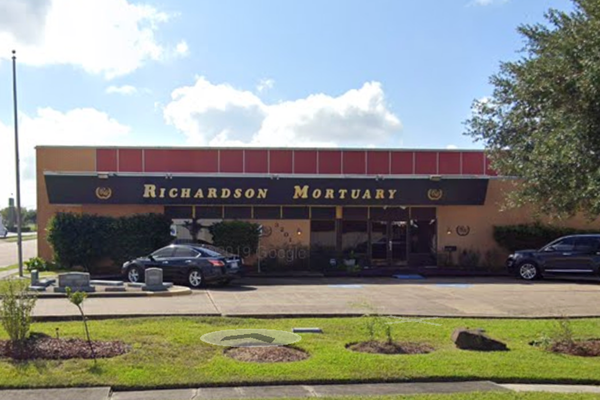If you found yourself passing through the elegant and then brand new first-floor passageways of the NBC Tower on Columbus Drive in the early 1990s, you’d often encounter a long line of jabbering, amped-up folks who were about to attend a taping of one of two nationally syndicated talk shows: “The Jenny Jones Show” or “Jerry Springer.”
The former program ran for 12 seasons, as the comedian/actress Jenny Jones segued from a relatively traditional talk-show format into a lurid, tabloid format. As for Jerry Springer—he took a similar path but elevated (or more accurately, sank) it to a whole other level, eschewing a milquetoast format for tawdry themes, raucous crowd participation and on-set fights, in the process becoming a huge TV star for all the wrong reasons. (And Springer would be the first to tell you that, not that his self-awareness mitigated the odious stream of garbage flowing from his show for some 27 years and nearly 4,000 episodes.)
The unapologetically controversial, undeniably talented, at times charismatic, infuriatingly exploitative, shameless and yet self-aware Springer, 79, died on Thursday at his home in suburban Chicago, leaving behind a legacy as one of the most polarizing talk show hosts in TV history. Whether fans regarded Springer’s show as a guilty pleasure hate watch or they were genuinely entertained by the trashy hijinks on display, the ratings didn’t lie. There was a time in the 1990s when Springer’s popularity rivaled that of Oprah Winfrey’s.
When Springer arrived in Chicago in 1992 after one year of taping his show in Cincinnati, “Jerry Springer” in its nascent stages was modeled after “The Phil Donahue Show,” with the host conducting substantial serious discussions with various panels and sometimes turning to the audience for feedback. I actually appeared on an episode of “Springer” in which a group of reporters discussed the state of journalism at the time. It was just another daytime talk show appearance. I thought nothing of doing the show and received zero negative feedback about it. This Jerry Springer fellow came across as a friendly, well-informed, standard-issue daytime talk show host.
That would soon change, in a revolutionary and often revolting way.
Saddled with low ratings, “Jerry Springer” made a whiplash-inducing pivot, with Springer turning into a grinning P.T. Barnum presiding over a never-ending parade of individuals who belonged to hate groups, had strange fetishes, were mocked for being different, were cheating on their partners, brawled with family members, etc., etc. The studio audience would chant “Jerry, Jerry, JERRY!” and the host would stand cross-armed and smiling from a distance while security guards broke up the latest fight and restored order. It was Theater of the Awful, it was dark, depressing, and terrible—and wildly successful.
At one point, I compiled a list of “Jerry Springer” show titles that included:
- “I’m Pregnant by a Transsexual”
- “Hillbilly Evil Doers!”
- “I Slept With Your Husband and Son”
- “Cross-Dressing Carny!”
- “Livid Lesbians!”
- “I’m a Breeder for the Klan!”
- “My Grandma is a Pimp!”
Mainstream Chicago figures were mortified by Springer becoming a pop culture icon. When Springer appeared on the cover of Rolling Stone with the Satan’s horns and tails scribbled onto his photo, the Rev. Michael Pfleger launched a protest against the show. In 1997, the esteemed WMAQ-Channel 5 anchors Carol Marin and Ron Magers resigned over concerns about the direction of the news operation after Springer was hired to deliver commentaries on the 10 p.m. newscast. (Springer delivered exactly two commentaries before he quit. The man could read a room; he knew this wasn’t a good fit for him.)

The Chicago City Council even called Jerry on the carpet for hearings in 1999 to determine if his show should be required to get an entertainment license. Aldermen took turns lambasting Springer and making statements about America’s morals, as cameras rolled from MSNBC, Fox News and Court TV, among others, and Springer fans inside the gallery applauded every time Jerry scored a zinger.
In 2002, when TV Guide named “Springer” as the worst show in TV history, longtime executive producer and show guru Richard Dominick said, “We’re thrilled to accept this prestigious award from TV Guide. And I’d like to thank my mother.” Springer, and Dominick, leaned into the appalling exploitation of it all; if people didn’t watch, they wouldn’t have been able to keep on doing it.
Chicago was home to the Springer show for nearly two decades, from 1991 until production moved to Connecticut in 2009. I ran into him a handful of times over the years, at a Michigan Avenue bookstore or in Gold Coast restaurant, and he was always exceedingly polite, low-key, cordial.
He almost across as the kind of guy who would never watch “Jerry Springer.”







